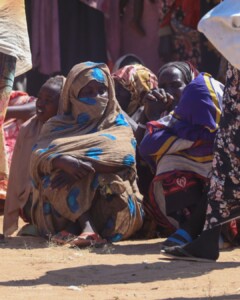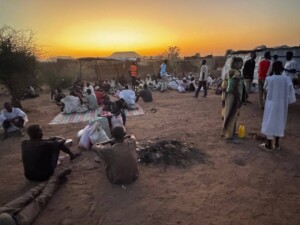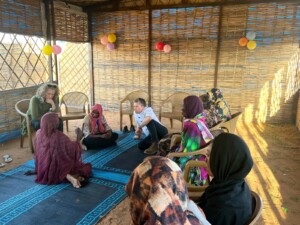Fevers spreading in Darfur, health care to be enhanced in eastern Sudan
People in Sirba locality in West Darfur complain about the emergence of “an unknown disease”, that has killed at least 15 patients. In Um Kedada in North Darfur, more than 400 families are living rough since rains destroyed their homes over the weekend. The Federal Minister of Health announced the establishment of more clinics in Red Sea state, to improve basic health care in the region.
 Um Kedada in North Darfur damaged by torrential rains and floods, October 6, 2019 (RD)
Um Kedada in North Darfur damaged by torrential rains and floods, October 6, 2019 (RD)
People in Sirba locality in West Darfur complain about the emergence of “an unknown disease”, that has killed at least 15 patients. In Um Kedada in North Darfur, more than 400 families are living rough since rains destroyed their homes over the weekend. The Federal Minister of Health announced the establishment of more clinics in Red Sea state, to improve basic health care in the region.
“Dozens of people have been infected,” relatives of patients reported to Radio Dabanga. “Fifteen people died, most of them children.”
On Monday, 230 patients were being treated at the Sirba Hospital, and dozens more at health centres in the locality.
The sources said the disease appeared two weeks ago. The symptoms include severe fever, headache, and diarrhoea.The health authorities told them that they did not know the disease and therefore have contacted the health authorities in the West Darfur capital of El Geneina to send a medical delegation to identify the disease and its treatment.
Last week, Radio Dabanga reported the death of ten people in El Fasher, capital of North Darfur, because of Dengue fever, haemorrhagic fever, chikungunya fever, and fever caused by malaria.
Homeless
On the other hand, the Executive Director of Um Kedada, Mohamed Abdallah, said that torrential rains this weekend led to the displacement of more than 400 families from different districts in the town.
The affected families are now living in the open, without food and shelter, he said, asking for urgent aid.
On Friday, Saturday and Sunday, heavy rainfall and flash floods caused the collapse of 33 houses, a mosque and a school. 428 houses, five schools and kindergartens were damaged, A large number of livestock drowned in the floods.
Basic health care
The Federal Minister of Health Dr Akram El Toom announced the opening of clinics in villages in the areas of Haya and Arbaat, with the aim to “significantly improve the provision of primary health care in the region”.
He also pledged to send midwives to the area.
The Minister's announcement came after a visit to Haya and Arbaat where a hitherto unknown disease has killed at least three people and hundreds of cows, sheep and goats.
The symptoms of the disease are high fever among people, and bleeding and abortion among livestock. The Preventive Medicine Society has advised the people not to drink milk, and burn dead animals.
Teams of the World Health Organisation and the Sudanese Preventive Medicine Society have arrived in the region to investigate the epidemic.
In mid-September, the Sudanese Ministry of Health reported 22 suspected cases of haemorrhagic fever in eastern Sudan’s Kassala.
Our editorial independence means that we can continue to provide factual updates about political developments to Sudanese and international actors, educate people about how to avoid outbreaks of infectious diseases, and provide a window to the world for those in all corners of Sudan. Support Radio Dabanga for as little as €2.50, the equivalent of a cup of coffee.












 and then
and then